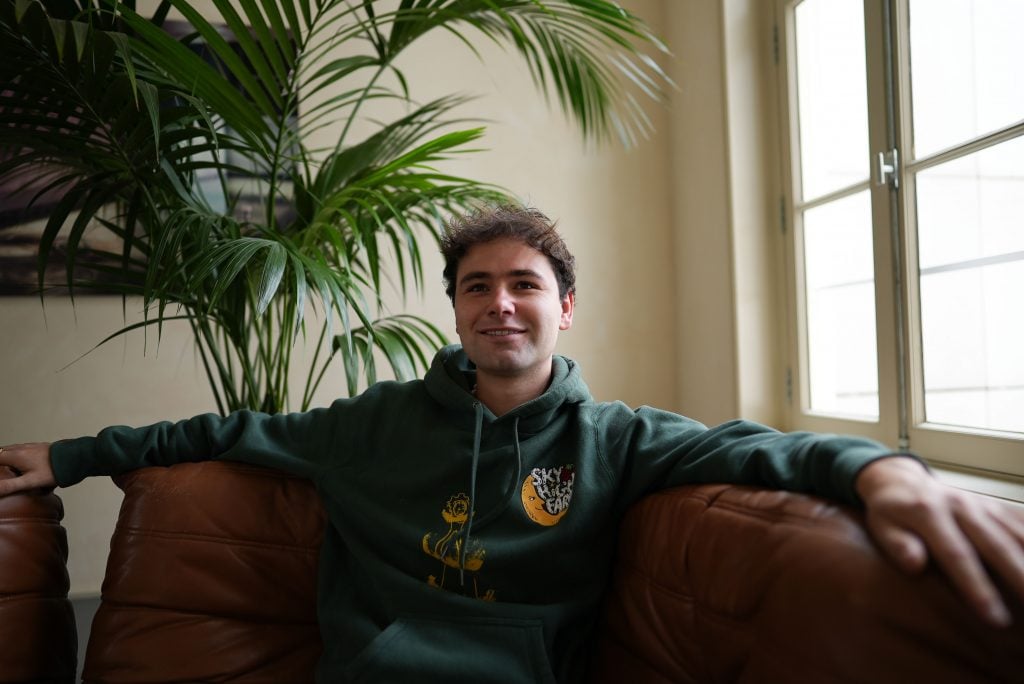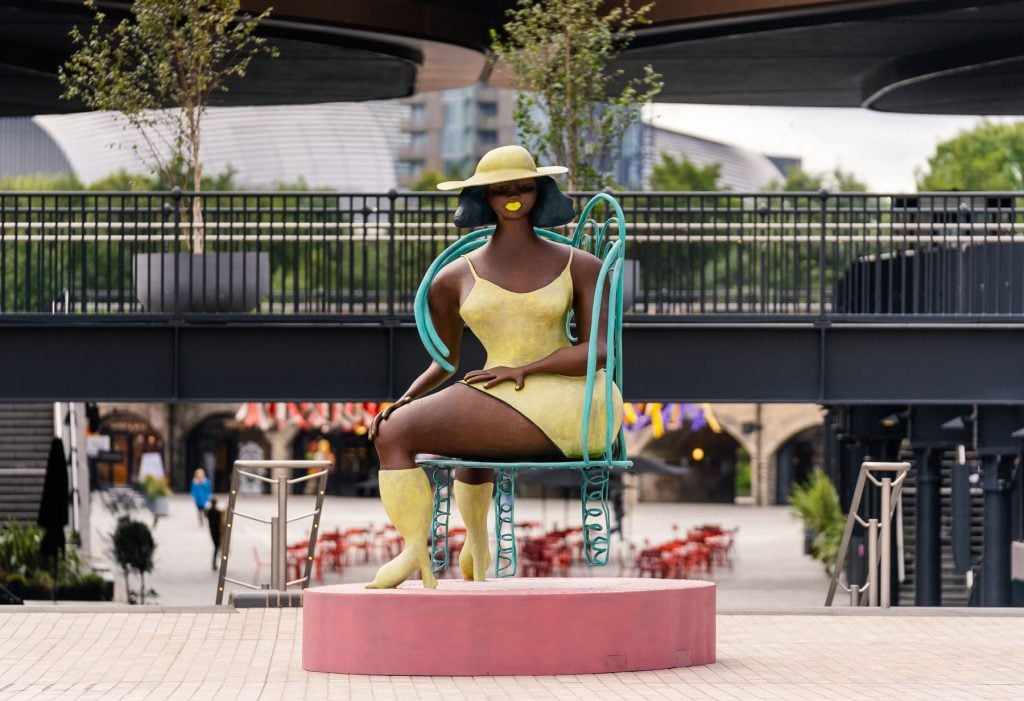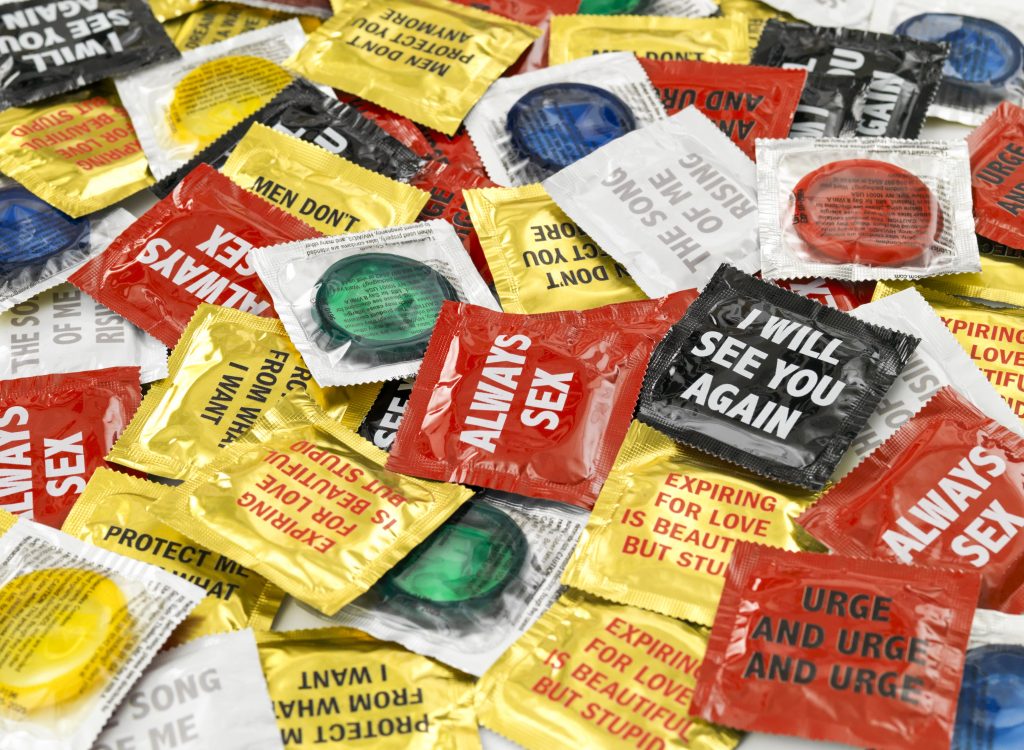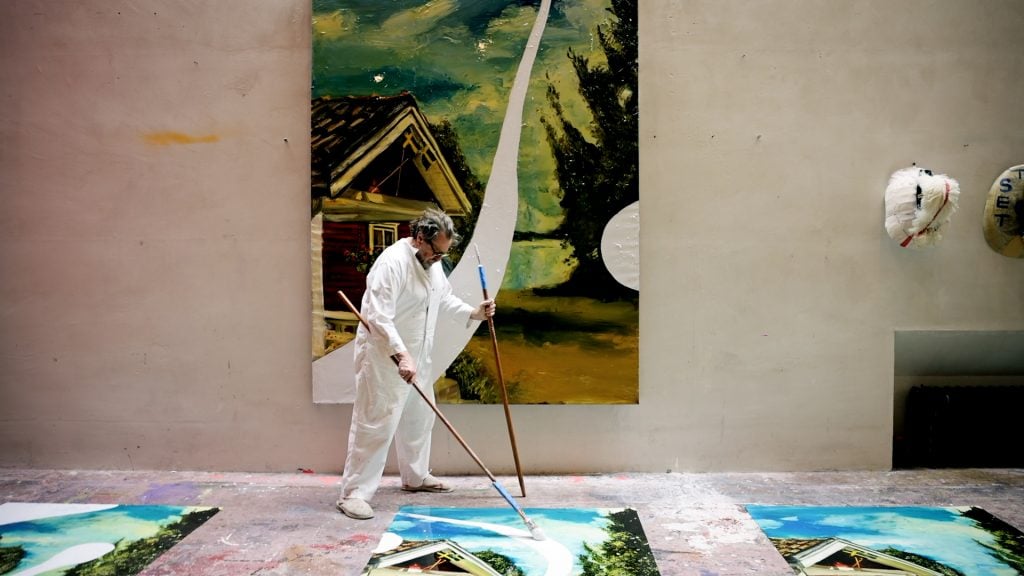Innovators List
The Innovators: Avant Arte Founder Christian Luiten on How He Built an Art-Collecting Audience of Millions
"Our goal is to bring great art to as big an audience as possible," Luiten says.

"Our goal is to bring great art to as big an audience as possible," Luiten says.

Hili Perlson

The Innovators is a five-part series of interviews with change-making art-world figures featured in the 2022 Artnet Innovators List.
Avant Arte is a dizzying success story of the digital age. What began in 2014 as a visual blog run by two hip-hop fans on Tumblr and then Instagram has grown into one of the most influential online platforms for contemporary art today.
Dutch childhood friends Christian Luiten and Curtis Penning were in their early 20s when they launched Avant Arte without any formal background in the arts. By 2017, they had built a 50,000-strong community of Instagram followers and launched a website selling artists’ editions. One year and several sold-out editions later, they landed a spot on Forbes’s 30 Under 30 list. Today, the platform’s 2.5 million followers include art-world leaders such as Hans Ulrich Obrist and Brett Gorvy, and its artist collaborations are getting ever more ambitious.
Artnet News recently selected Luiten for its 2022 Innovators List, which features 35 professionals pushing the art industry forward. We caught up with him earlier this fall while he was on a train from the Netherlands to London, where Avant Arte unveiled its first public art commission—a monumental bronze sculpture by Tschabalala Self, installed at the Thomas Heatherwick-designed shopping district Coal Drops Yard.
The conversation below is an expansion of his entry on the Innovators List, in which he discusses breaking into the industry with no contacts, inspiring artists to realize bold new ideas, and why Avant Arte treats NFTs just the same as any other medium.

Avant Arte recently unveiled its first public art commission—Seated (2022), a monumental bronze sculpture by Tschabalala Self, at Coal Drops Yard, London. Photo: courtesy of Avant Arte, © Lucy Emms.
The last time Artnet News profiled Avant Arte was in 2017, when you had just transitioned from an Instagram account introducing a younger generation to contemporary art into a selling platform for high-quality editions. Now you’re at 2.5 million followers and commissioning public art projects. How do you look back on the past five years?
It’s been an insane journey. In 2017, we had just launched our website where we planned to offer editions. It was more of a test to see if we could do it because neither of us came from the art world, and we didn’t have any experience. We had Instagram followers, but we didn’t have any relationships with artists besides a few emerging names. So we launched the website, and the first edition sold out in two hours. It was a print by Icelandic artist Katrin Fridriks priced at €900 in an edition of 140. We made more than €100,000 in just over two hours! That’s a lot of money. So we thought, this is going to work out.
How do you explain this success in hindsight?
We didn’t reinvent the wheel with editions and prints. But I think we spoke to our audience. We had a big community of young art fans who were never part of the art world. The editions are also very high quality and the packaging is right. It was really about building a brand, and a community.
What did this initial experience reveal to you about the art world?
That in a way it’s a really small world—a few people with a lot of power. But because we brought a new audience we’ve been really welcomed. A lot of people were excited about this new audience that’s starting to get interested in art, so in a way we’ve always felt accepted by galleries, artists, curators. We started out without any relationships, but we now work with some of the biggest artists in the art world. We’ve collaborated with Jenny Holzer, Huma Bhabha, Mickalene Thomas… That’s crazy because we didn’t know anybody! Maybe that’s the big surprise. Sometimes, from the outside, you feel like, oh, they don’t want us, but it actually was the opposite.

Jenny Holzer’s edition with Avant Arte in support of the NYC AIDS Memorial, URGE AND URGE AND URGE (2020). Photo: courtesy of Avant Arte.
It couldn’t have all been smooth sailing. Have you ever gotten a “no” from anyone?
All the time! I’m sometimes still surprised when people answer emails [laughs]. We usually wait for the right moment to approach somebody so that we get a “yes.” We didn’t reach out to someone like Jenny Holzer at the beginning, of course, it didn’t make sense. Sometimes you have to be patient.
How do you make decisions on who to work with? What criteria do you use?
We discuss internally with the artistic team, and there are different factors as to why we work with an artist. We try to be eclectic. We’re doing a forthcoming edition with Paul McCarthy, who’s in his late 70s and very well known, but then we also work with ceramic artist Sharif Farrag, who is still in college. We try to work with artists from different backgrounds, locations, scenes, and age groups. Our goal is to bring great art to as big an audience as possible. Sometimes, working with certain artists can help us to reach new audiences.
Which artists are you most excited about right now?
Saj Issa, Amanda Ba, Ben Wirth, and Sharif Farrag from my most recent studio visits in the U.S. I’m also excited about our collaboration with Tom Sachs! It’s a print of an NFT he’s done, which was bought by LACMA. Tom hasn’t done a print in a long time, and it’s a fundraiser for the museum.
Avant Arte has done everything from prints to sculptures to NFTs. How do you decide on the format each artist’s edition will take?
Most of the time I’m traveling to meet with artists, going to their studios, and talking about ideas. I definitely got the sexy part of the job [laughs]. We develop the ideas together. We’ve done sculpture editions with artists who’ve never made sculptures before, for example. Then we talk materials and price points. We have a big production team who also talk with artists to see how we can realize their ideas. We can tell them, “This is where we do bronze, this is where we do marble, would you want to do something like this?” We want to inspire the artists to do something they’ve never done before. That’s why we’re different from an online gallery because we really create work with the artists. It’s a collaborative process, and every artist is different.

Julian Schnabel in his studio with The Swedish House, edition of 10. Photo: courtesy of Avant Arte.
As a company that got its start in the digital space but is now anchored in the production of physical artworks, what’s Avant Arte’s take on NFTs?
We have done two NFT projects so far, and we just treat it the same way as any other medium. We sometimes do bronze or marble, a work on paper, or an NFT. We didn’t build a different platform for NFTs. I believe that art is always a reflection of society and 100 years from now we will remember a great digital artist. Avant Arte wants to work with artists who will be remembered. There are some really exciting artists in this space and so, naturally, we want to work with them. We haven’t worked yet with a “physical” artist on an NFT. But who knows? Maybe we’ll collaborate with a painter who says, “I don’t want to do a print, I want to do an NFT.” If it makes sense, we will consider it.
You mentioned a production team—how many people work for Avant Arte now?
We’re now 105 people in total, having grown from a team of 13 in March 2021. Our team is split between Amsterdam and London, with Amsterdam remaining our HQ. And we’ve just got our own in-house printing house, based in London.
What is the best piece of career advice you’ve ever received?
I once asked somebody who has seen really great businesses being built, “What’s the formula? What makes great businesses succeed?” They said there isn’t one formula because it’s different for every endeavor, but there’s one thing that every successful business had in the beginning, and that is being a magnet for talent. Without a great team you cannot build a great business. We had that in our minds from the very beginning.
How do you make sure your company attracts talent?
In the beginning it’s about being bold and ambitious and showing people that you’re on a great journey—you’re working on a dream to change an industry. Who wouldn’t want to join a company that’s going to change an industry?
You’re on a mission to make the art world accessible to more people, and you’re a great example of that, as you didn’t come from an art background. How has art improved your life?
I lead a crazy life now—it has completely changed my life. But, to answer in a more philosophical way, art makes you more open-minded. Trying to understand different people from different worlds and their expression makes your mind work differently. It can open up your world and enrich your life. People can’t live without music for example, because so much of our memories and inspiration is related to music. I think art has the same potential. And it makes life more fun.